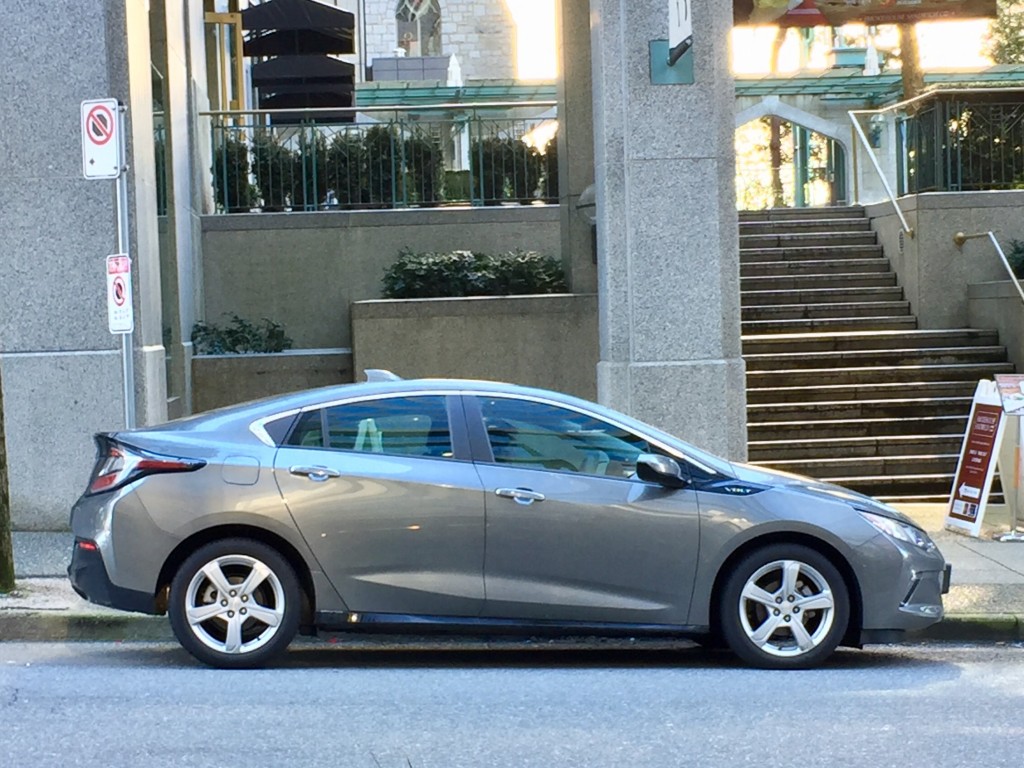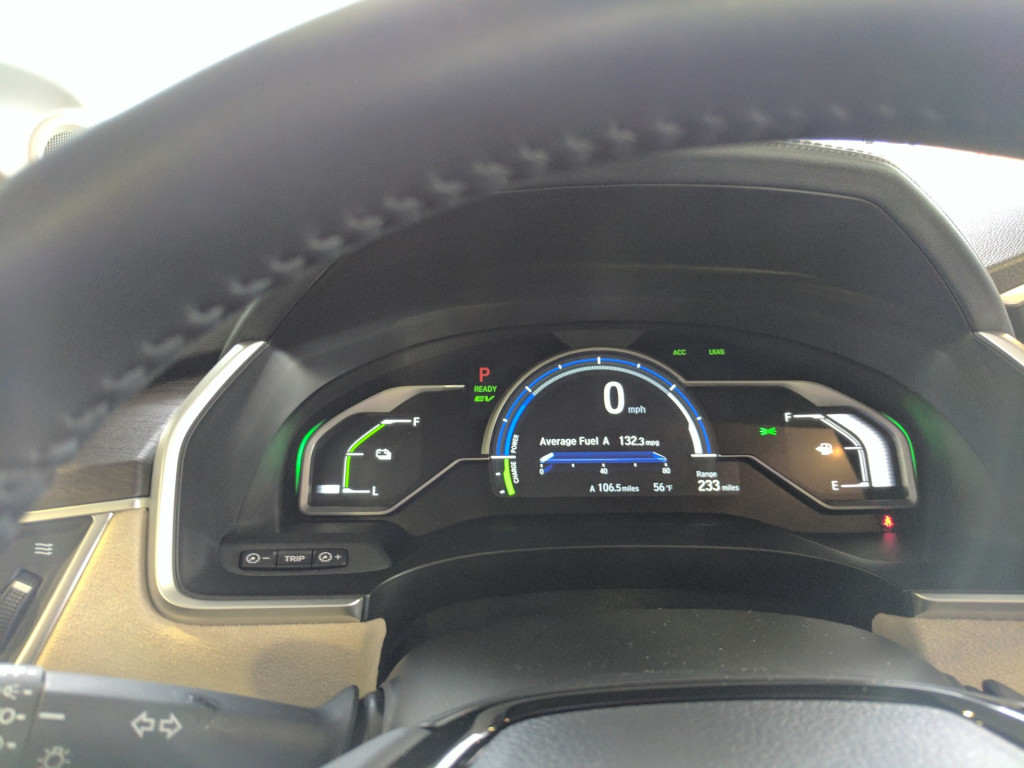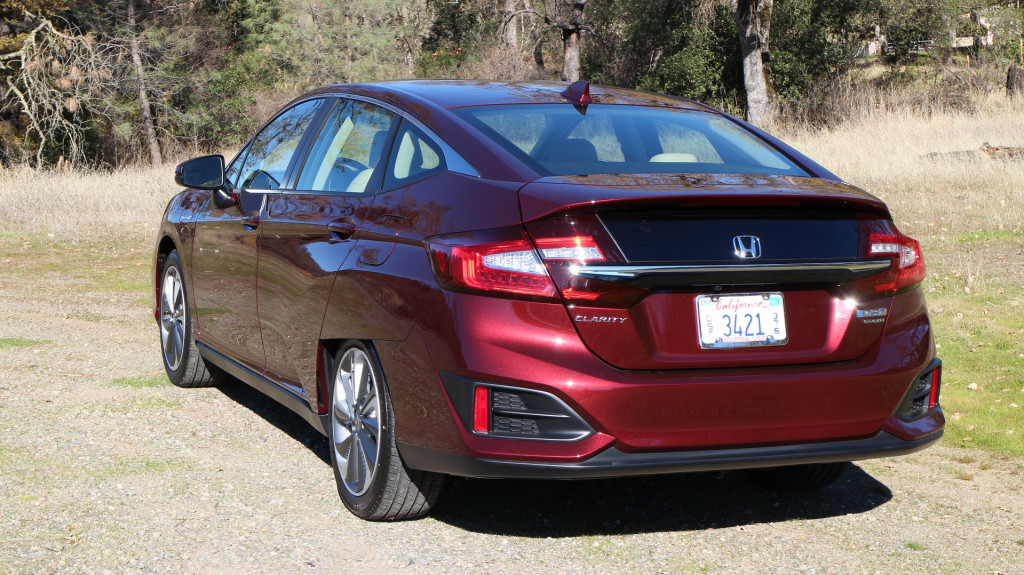I’ve owned two Chevrolet Volts, an early 2011 model and, currently, a second-generation 2017 version. I have loved them both.
They’re sleek, sprightly, and have enough electric range to cover most driving. For longer trips, the gas engine kicks in when the charge runs out. The Volt, to me, is the perfect compromise between electric and gas, traditional and cutting-edge—and the car I almost always recommend when people ask me what electric-car they should buy.
Three features set the Volt apart from—and in my opinion way above—other plug-in hybrids such as the Toyota Prius Prime and Ford Fusion Energi.
READ THIS: 2018 Honda Clarity Plug-In Hybrid: weekend drive review
First, the Volt has a much bigger battery—18.4 kwh, good for an EPA-rated range of 53 miles. Other plug-in hybrids have smaller batteries that typically limit electric range to around 20 miles—and in the case of the early Prius plug-ins, a pitiful 11 miles.
Second, the Volt has a much bigger electric motor—149 horsepower and 298 foot-pounds of torque. That torque number is more than double the electric oomph of the Prius Prime and Fusion Energy.
And third, the Volt uses a (mostly) series-hybrid powertrain. That means the electric motor drives the wheels virtually all the time. When the battery runs out, the Volt’s gas engine kicks in as a generator and keeps the battery charged up to power the electric motor.
As a result, the Volt driver always enjoys that sublime electric torque, even in gas mode.
Puny parallels
The parallel drivetrains of other plug-in hybrids work differently.
In general, the gas engine and a small electric motor trade off or pair up as necessary to drive the wheels. The electric motor can typically handle gentle acceleration and moderate speeds by itself, but when more power is needed, the gas engine jumps in to help drive the wheels—even with a full battery charge.

2017 Toyota Prius Prime and 2017 Chevrolet Volt with Green Car Reports editor John Voelcker
Short range, little torque, burning gas even when the battery is fully charged—why would anyone put up with these shortcomings when they could buy a Volt?
It's always puzzled me that, even after the Volt pioneered the long-range series-hybrid way back in 2011, no one else followed
Enter the Clarity
Finally, in 2018 the Volt gained a true rival—a series hybrid with a big battery and a big electric motor. And with the reputation and marketing power of Honda behind it, the 2018 Clarity Plug-in Hybrid has the potential to be a star player on the electric-car scene.
The two cars’ numbers are very similar.
The Clarity Plug-in Hybrid has an EPA electric range of 48 miles, just shy of the Volt’s 53.

2018 Honda Clarity Plug-In Hybrid drive, Napa Valley, Caifornia, Dec 2017
In gas mode, both the Clarity Plug-in Hybrid and the Volt get 42 mpg overall.
The Clarity Plug-in Hybrid has a bit more electric power than the Volt (181 vs 149 hp) but less electric torque (232 lb-ft vs 298).
READ THIS: 2018 Honda Clarity PHEV revisited: is this the car Bill Clinton wanted built?
Their prices are very similar: a base price including destination of $34,295 for the Clarity Plug-in Hybrid, $34,095 for the Volt.
On paper, the Clarity Plug-in Hybrid and Volt really diverge in only two major areas: size and body style. The Clarity is classified as a mid-size sedan, the Volt a compact hatchback.
Numbers aside, I was eager to test-drive a Clarity Plug-in Hybrid and to see if my beloved Volt was about to be dethroned as "King of the Plug-In Hybrids."
Dealer demo
I headed to my local Honda dealer to drive the Clarity.
Not a great way to do a thorough evaluation, to be sure. But it would let me get a basic feel for the car—as well as a chance to see if mainstream dealers are starting to move beyond ignoring electric cars, which I’ve seen so often in the past.
So I told the dealer I was checking out the Clarity as a possible alternative to my Volt when my lease expired.

2017 Chevrolet Volt in Vancouver, BC, Canada
As I pulled into the dealer’s lot with my college-age daughter Callie (who actually drives my current Volt most of the time), I was astonished and delighted to see a Clarity Plug-in Hybrid displayed right out front in a featured position.
Perhaps Honda dealers have seen the electric light at last?
Not this one. Once we got inside, the salesman was unable to find a Clarity brochure. And then, as we got into the demo car for the test drive, it turned out the battery was completely discharged, so we could only drive it in gas mode.
CHECK OUT: 2016 Chevrolet Volt: Gas Mileage Review
At least the salesman knew how to turn the car on.
The gas-mode-only test drive did reveal a couple of things.
First, I noticed that the regenerative braking was weak. The feel was pretty much the same as a conventional car. The Clarity Plug-in Hybrid does have a regen paddle on the back of the steering wheel, but its effect was barely noticeable.
Strong regen is one of my favorite things about the Volt (and, to an even greater degree, my Tesla Model S). So in my book, this was a big strike against the Clarity Plug-in Hybrid.
Callie also noted the regen difference immediately and gave it a similar thumbs-down verdict. (That’s my girl!)
The car’s acceleration also felt sluggish compared to the Volt. And to my ear, the gas motor seemed rather louder than the Volt’s in gas mode, surging erratically up and down in a way that is oddly disconnected from the gas pedal. (The Volt does this as well; it’s just not as noticeable.)

2018 Honda Clarity PHEV 106.6 miles at 132.3 MPGe
EV mode
I made a second visit to the same dealership to check out the Clarity Plug-in Hybrid’s EV mode. Although the salesman on this second drive had never been in a Clarity Plug-in Hybrid before and knew nothing about it, at least the battery was charged.
In EV mode, my driving impression was pretty much the same: sluggish acceleration and weak braking regen.
READ MORE: Can Honda break through buyer confusion about plug-in hybrids?
Worse, I found that during hard acceleration in EV mode, there’s a detente in the accelerator, beyond which the gas motor kicks in—suddenly and loudly. The first time I pulled out to pass another car, it sounded like the 103-hp inline-4 was straining for mercy—a startling contrast to the effortless hum of the Volt at full bore.
All-in-all, I was disappointed in the Clarity Plug-in Hybrid driving experience. Slow, no regen to speak of, and the gas engine thrashing away every time I asked for a little extra power.
The ride was smooth and solid, quite comparable to the Volt’s. I didn’t get a chance to push the agility envelope, but it felt fine in normal driving.
Back seat room
There’s one place the Clarity Plug-in Hybrid kicks the Volt’s butt: inside.
The original Volt had only two seats in back; the current model has maybe two and a half. The middle-seater pretty much has to be a kid.
But the Clarity Plug-in Hybrid has a roomy rear seat area that will easily fit three adults. Knee and head room are clearly superior to the Volt’s.
I’d say the Clarity Plug-in Hybrid’s interior is a bit nicer as well.

2018 Honda Clarity Plug-In Hybrid
In terms of cargo room, the Clarity Plug-in Hybrid easily beats the Volt at the numbers game, 15.5 to 10.6 cubic feet.
But in the real world of utility, the Volt’s hatchback layout and fold-down rear seats are a big plus, at least in my lifestyle.
In my old 2011 Volt, I regularly loaded in my full-sized mountain bike (without removing the front wheel) and our golden retriever simultaneously. In three years and 35,000 miles of Volt-driving, I never once wished I had more room back there.
I didn’t bring the bike or the dog along for a loading test of the Clarity Plug-in Hybrid with the rear seats folded down. But the trunk opening of the Clarity Plug-in Hybrid looked like a mail slot next to the Volt’s yawning hatchback.
Bottom Line
For me, the verdict is clear: the Volt remains "King of the Plug-in Hybrids."
But then I’m an electric-car nut who savors acceleration and regen. The idea of burning gas to get full performance in EV mode offends me. I don’t carry rear-seat passengers very often, but I regularly fit in bulky items with the rear seats folded down.
If you’re just looking for a very efficient and comfortable car, and your back-seat passengers’ knee room takes precedence over the driving experience, the Clarity Plug-in Hybrid is a fine choice.

2018 Honda Clarity Plug-In Hybrid drive, Napa Valley, Caifornia, Dec 2017
And the Honda dealer I visited is offering a pretty good lease deal on a base Clarity Plug-in Hybrid: $1,195 down and $259 a month for 39 months.
That’s right on par with Chevy’s current lease deal on a base 2018 Volt: $1,439 down and $259 a month.
GM and Honda competing head-to-head on a plug-in car. I love it.












